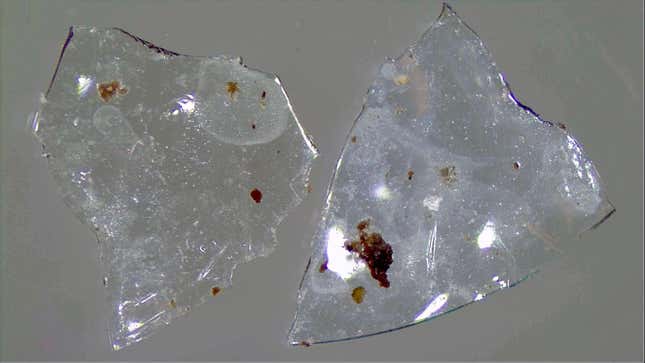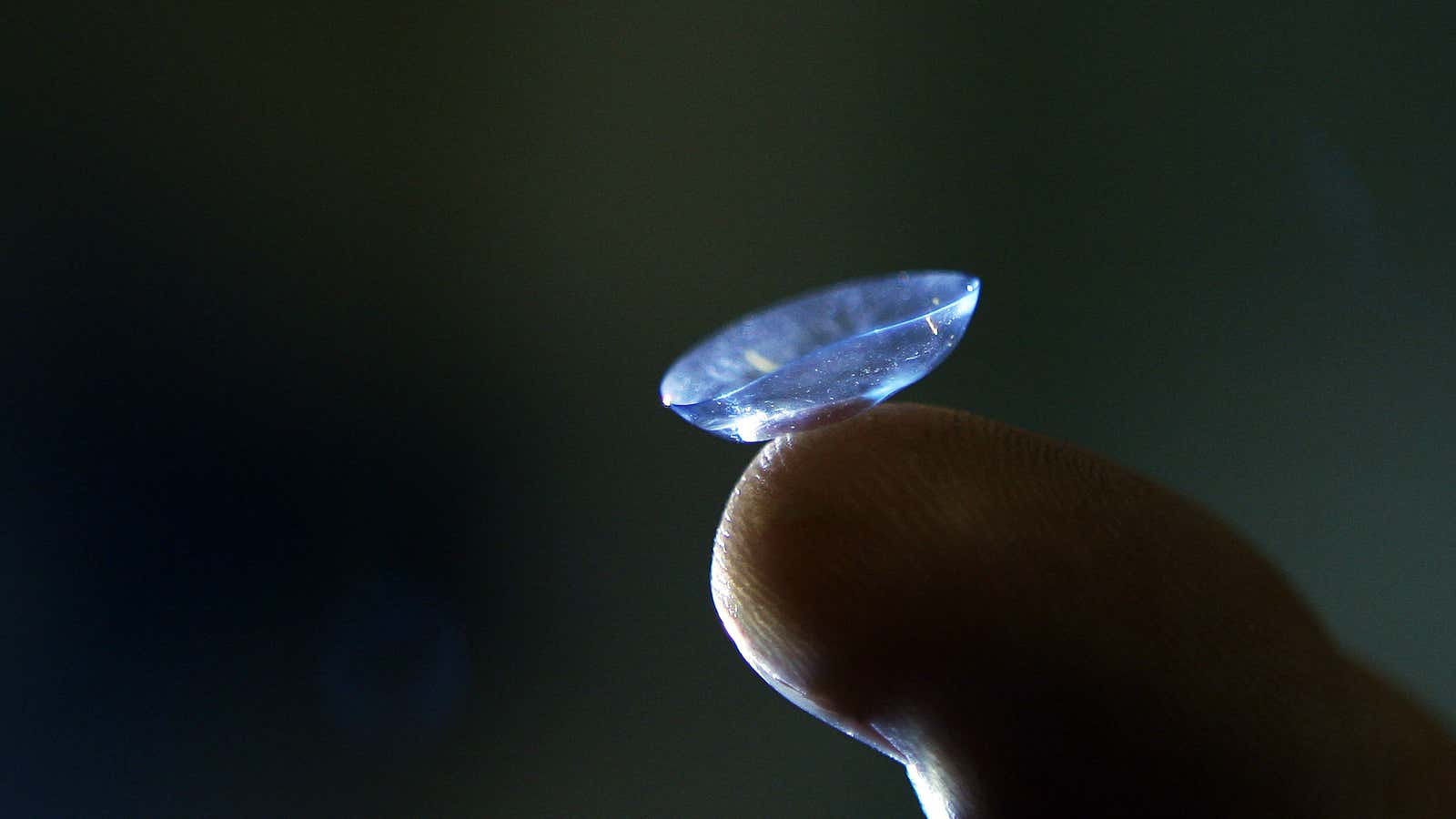Keeping contact lenses for too long can cause all kinds of eye problems—infections, ulcers and, in extreme cases, a run-in with eyeball-eating amoebas.

But throwing them out the wrong way, it turns out, is also a bad idea. Flushing contact lenses, as many of the approximately 45 million Americans who wear them do, risks hurting fish and ocean life. (Update: see bottom of the post for how to recycle used lenses and packaging for free.)
New research presented at the American Chemical Society’s meeting in Boston on Sunday sounds the alarm about the damage all those contact lenses do after they’re flushed down the toilet or sink. Many of them are making it through filters meant to keep trash from escaping sewage treatment plants, and they can sink to the bottom of oceans, where they present risks to bottom-feeding fish.
The researchers tested how 11 types of lenses survive in wastewater treatment facilities, and found that they can fragment into shards of plastic, becoming part of the microplastic pollution that is increasingly swirling around the ocean and other waterways. On top of that, the plastic shreds can sop up high volumes of pollutants during their trek through the sewer—which then are ingested by the fish and other animals that swallow them.
As bigger fish eat the plastic-eating littler fish, these polluted hunks cycle their way through the food chain—and eventually make their way into human food. And not just by way of the sushi counter; plastic mini-nuggets now taint everything from German beer to table salt. In theory, these sewage-stewed contact lens slivers could hurt coral too. A recent study found that microorganisms borne by microplastics that then snag on a single coral can sicken entire reefs an a gangrene-like sweep.
This is all worrisome because between 19% of the contact lens wearers in the researchers’ anonymous survey flushed their lenses down the toilet or dumped them down the sink drain. And while they might seem insignificantly tiny when you’re popping them out of your eye, it adds up. The researchers estimated that six to 10 metric tons of lenses end up in wastewater each year in the US.
So by all means, throw out your contacts when you’re supposed to. But put them in the trash, not down the drain.
Update (Aug. 20, 2018, 1:30pm ET): Bausch + Lomb offers free recycling services for used contacts and packaging in the US. Consumers can box up their used contacts, along with the top foil and blister packets, and mail it for free using the shipping label printout on Bausch + Lomb’s site, which sends the box to TerraCycle, a company specializing in “hard-to-recycle” waste. The program accepts any brand of contact lens waste, not just Bausch + Lomb. Some optometry offices also provide free-of-charge shipping services for recycled lenses (consumers can check the website for locations). Thanks to reader and optometrist Dr. Matt Pietruszka for pointing this out.
